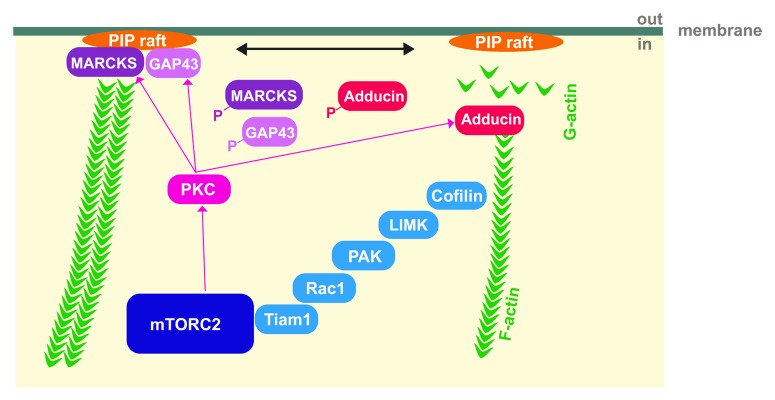
Figure 1. Model for the regulation of actin cytoskeletal dynamics by mTORC2. Activation of PKC by mTORC2 results in a phosphorylation of GAP-43-like proteins, MARCKS and GAP-43, which dissociate form PI(4,5)P2 rafts and make PI(4,5)P2 accessible for other actin cytoskeletal regulating proteins or hydrolysis. In parallel, PKC causes free-barbed actin filament ends by phosphorylating adducin which promotes actin dynamics. Association of mTORC2 with Tiam1 and the regulation of its downstream targets may also contribute to actin filament stabilization. In this model, mTORC2 affects depolymerization and polymerization of actin at different sites by controlling PKC- and Tiam1-signaling.
